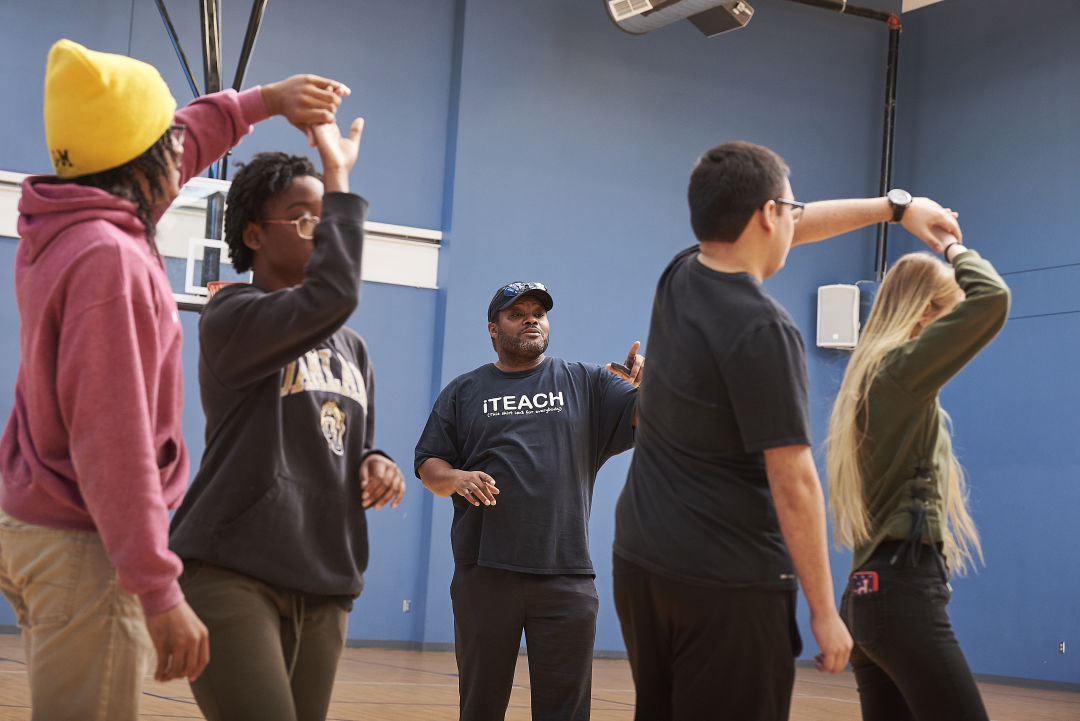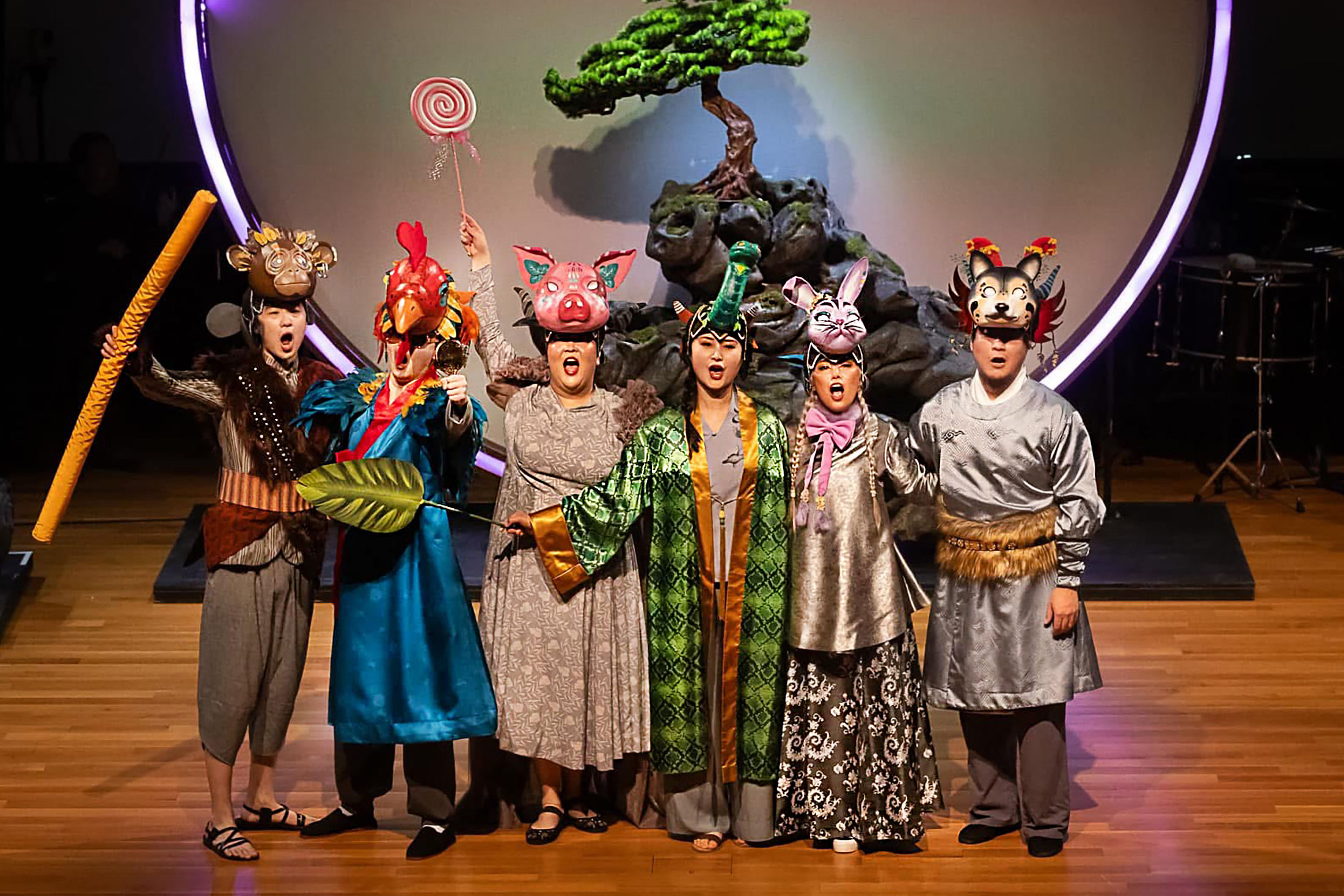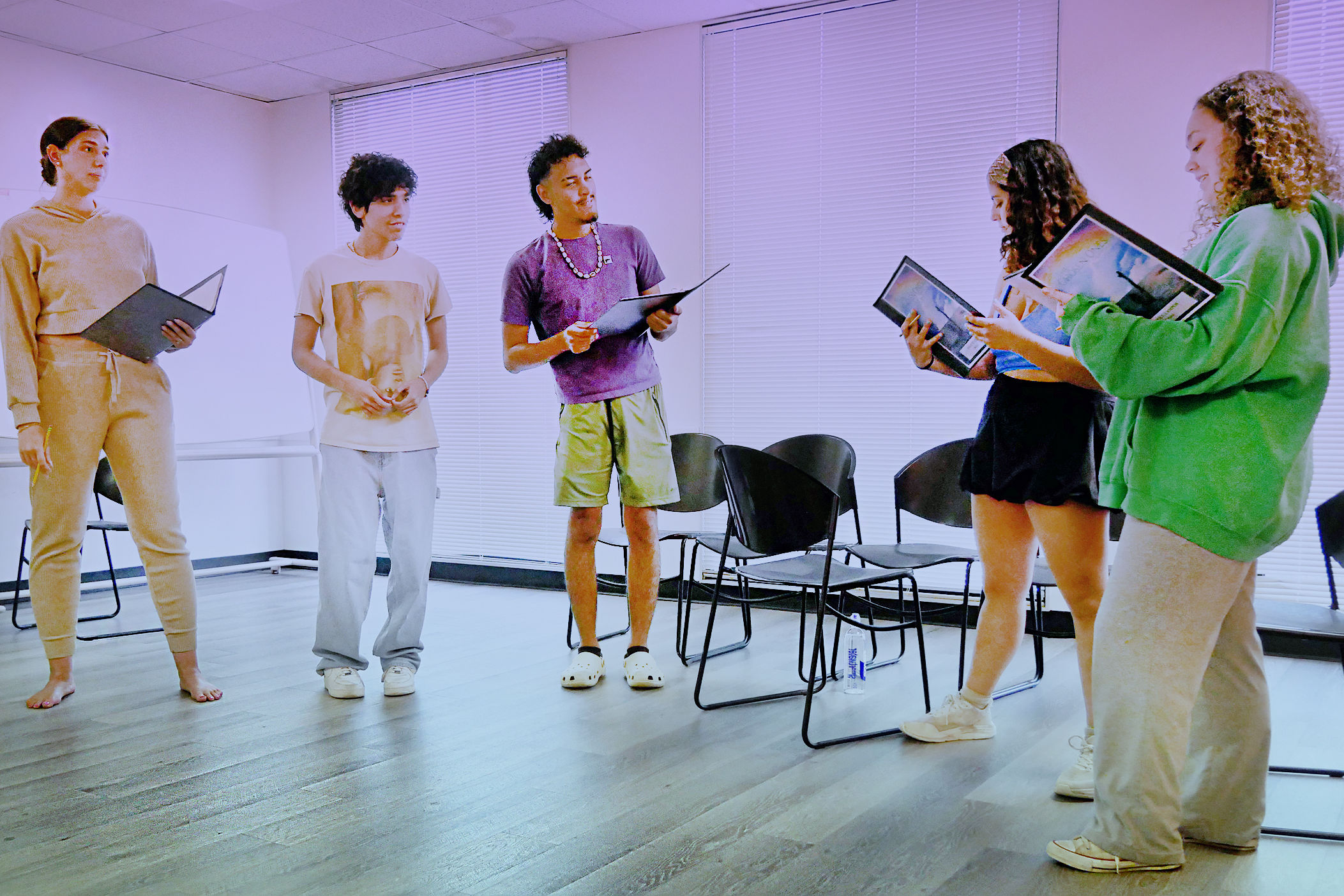Jay Owens Is Determined to Save the Houston Two-Step

High school students learn how to dance the Houston Two-Step at the Eastwood Academy gym.
Image: Anthony Rathbun
ON A RECENT RAINY SATURDAY, a handful of high school students were hanging out inside the spacious Eastwood Academy gym, filling out nametags and waiting around with an air of anticipation—for some, perhaps, quiet dread—as a Bluetooth speaker played R&B hits. Most had shown up by choice, although one, a freshman named Avin, said he was there “because my dad made me.”
They were there to learn the Houston Two-Step, our city’s swing dance. The free Saturday class is taught by three of the city’s best two-steppers, Jay Owens, Latesha Thompson, and C.C. Sutton of Flo-Motion Dance Association, whose mission is to get teens to enjoy and preserve the historic dance—something of a tough sell in the age of dabbing, twerking, and Milly Rock.
The Houston Two-Step was born out of the jitterbug in the 1930s and nurtured at the Eldorado Ballroom and other African American clubs in Houston during the 1940s. It developed organically, over time, like other regional swing styles, including the DFW Swingout, Detroit Ballroom, and Chicago-Style Stepping, but by the ’80s and ’90s it had all but died out. By then younger generations had lost interest, didn’t know it existed, or didn’t care for the older folks’ teaching methods. “They’d just drag you through the movements,” Owens said, “even in the club. It turned people off.”
Owens didn’t encounter the dance until 2007, when “old-school” local legends like Lee “Smooth” Perry, Master Redd, and Willie “2+2” Fleming made an effort to revive it in Houston. They helped him to cultivate the fluid style that led to his own illustrious nickname: Flo-Motion. He soon won competitions, gained a following, and, about a decade ago, started Flo-Motion Dance Association to teach the two-step himself, even going so far as to create and copyright a curriculum for teaching the dance—zero dragging involved.
What does the Houston Two-Step look like? The students in the gym that day quickly discovered that as they lined up across from each other to form couples—yes, it’s a partner dance. They learned how to hold hands, with each lead dancer stretching out three fingers that his partner would hook onto. “Now don’t be nervous,” Owens advised the dancers. “Boys are always more afraid than girls.”
The guys learned to gently lead their partners, marching in place through the six-count “basic” position before trying the three-count “walk” across the gym. Soon Ella Mai’s “Trip” began to play, and the dancers counted out their steps, following Owens’s calls of “Basic!” and “Let’s walk.” It wasn’t long before the couples were moving on their own, including Owens and Sutton, whose sparkling high-heeled ballroom shoes appeared set to the spin cycle.
“This is your dance,” Owens told the students. “Your city’s dance. What I want to do is get enough of you doing this so we can hold social dances. You can get as good as you want to, okay? And you can put your own style into it.”
Afterward the teens relaxed with Doritos and juice, chatting and showing off moves while two of Flo-Motion’s junior competitive dancers, Zaria and Ethan, glided across the floor, practicing a routine they’ll perform at the International Swing Dance Championships in May. The duo took first and second place in the Junior Division last year, blowing away the competition, even though they’d only recently learned the dance. If it’s up to Owens, though, soon they’ll have a lot more competition.
“Kids always get it fast,” he said, smiling. “It’s the adults that have a hard time.”




